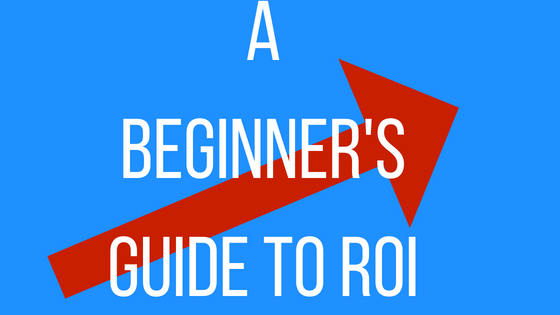A Beginner’s Guide to ROI

Companies often spend a lot of time, money, and effort into creating a content marketing plan that they think their target audience will love. However, without a positive return on investment (or ROI) there is no point in having social media accounts or running campaigns. While trying to measure social media ROI might sound like an impossible task, if you use the correct tools and create a plan it is easy to gather data and achieve results.
Metrics: First of all, what metrics do you need to be tracking? While this varies a bit depending on what social media platform you are measuring, there are four primary areas you need to measure: Conversion rates, leads generated, increased site traffic, and brand awareness. Although these all tie in with one another, it is helpful to analyze them one at a time to truly get an idea of where you are doing well and where you need to improve.
Once you decided which of these four areas you would like to focus on first, optimize your ROI by taking action. Interact with your audience, engage them, and search for niche community sites to mingle with. Monitor and observe where you are being mentioned, where you are getting positive and negative reviews, and where you are influencing your audience online. Mention is a great resource to track where and when audiences are talking about you. Use free tools such as Google Analytic to track your website’s visitors and conversions. Once you have a decent amount of information, create a report that correlates social media to Key Performance Indicators (or KPI’s). KPI’s include measurable things such as revenue, orders, leads, phone calls, and referrals.
What should I measure: The social media metrics you track will depend on your social media platform, as well as your company’s individual needs. Some examples of metrics to track are inbound links, ratings on other websites, comments and mentions, downloads, membership increase (such as an increase in followers), engagement, page views, and subscribers. Of course, there are many more than these, but tracking basic metrics such as these will give you quick insight to how your company is doing. Define KPI’s you want to track or improve while looking at these to help boost your social media and ROI. Choose to look into metrics that can translate into new sales or leads, and specialize KPI’s to different networks. For example, you might want to increase the number of followers you have on Facebook, while your goal for Twitter could be more re-tweets.
There are 5 main metrics you should look into tracking: Audience, interactions, brand perception, expenses, and sales. While tracking your audience, look at who you are reaching- is it your regular customers, influencers, potential customers, or the general public? See who is viewing and interacting with your pages. Looking deeper into the interactions, tracking views, shares, likes, and comments across social media. Use call-to-actions or promotions to see how your audience is responding to what you are putting out. You can use interactions to help track how your brand perception has changed. Customers will either have a positive or negative response to your social media marketing, and keeping up with how they view your brand is crucial to helping you create the brand image you are aiming for. Running adds, using subscription websites such as HootSuite, and spending valuable time creating and executing social media campaigns can add up more quickly than many companies realize. While social media is still much more cost efficient than traditional marketing methods, make sure you are keeping track of how much money you are spending vs how much money you are making.
What not to do: While learning to track ROI, it can be easy to get off track. There are some simple mistakes marketers tend to make. First, make sure you have a plan for measuring ROI. It is easy to get excited and want to jump right in, but having a plan for what you intend to do will help you stay on track and make the most of your time. Measuring everything, instead of focusing on one area at a time, is another mistake many marketers make. By trying to measure everything at once, you are putting yourself more at risk to miss important data or overlook information that could come in handy. Not tracking your progress is a costly mistake that is common. Keeping up with how you’ve improved is very important so that you can analyze what you have changed and how you can continue improving. If you are making changes and not seeing results, that is a sign that you need to update your marketing plan and possibly do some more research on what your target audience is looking for. If you are working on a team, do not keep your progress to yourself. Set up a regular meeting time to go over what you have found and keep each other updated on your research.
Tracking ROI is worth the effort if you are looking to grow your business and reach a wider audience. If you are not getting a return on your investment, it is time to rethink your marketing strategy. Not only do you want to make sure that you are spending your time and resources wisely, you want your customers to feel heard and appreciated as well.



3 Comments
nerdle · June 9, 2022 at 9:55 pm
This is a great tutorial for newbies like me, many thanks for your post
fnaf 2 · June 14, 2022 at 12:03 am
The post in this forum is amazing, the post is very helpful for me.
dordle · June 14, 2023 at 3:17 am
I read your blog post, and I thought it was very interesting and helpful. I like how useful the information is in your post.